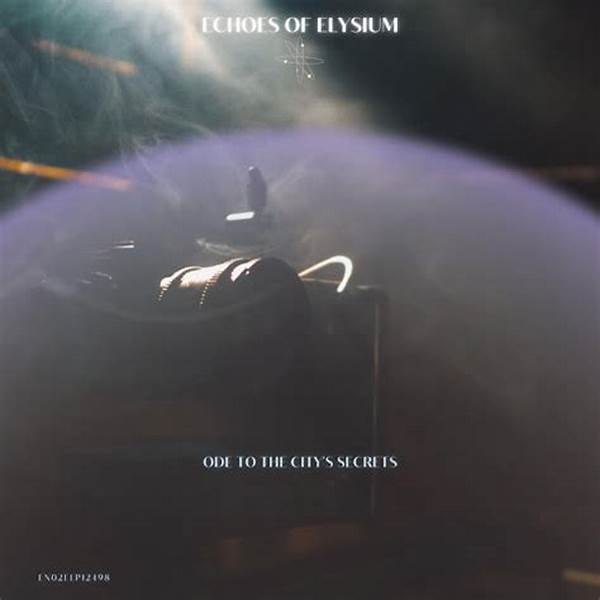
Ghostly Presence In Blues Music
- Daniel Anderson
- 0
- Posted on
The blues have always been a genre shrouded in an enigmatic aura, and it often seems as if the ghosts of past struggles and triumphs seep into every note and lyric. This mystical vibe, often referred to as the ghostly presence in blues music, captivates listeners and musicians alike. With a rich history of heartfelt pain, triumphant survival, and soulful expression, blues music carries an ethereal element that feels like a haunting whisper from the past. Let’s explore the mysterious echoes that contribute to this spectral sensation in blues music.
Read Now : Morning Routine Adjustments For Migraines
Haunting Echoes of the Past
In its essence, blues music is a melody of emotion, born out of life’s raw experiences. This genre, deeply rooted in the African American experience, often conveys sorrow, longing, and resilience through its poignant lyrics and melancholic tunes. The ghostly presence in blues music is not just metaphorical; it’s a poignant reminder of the lives that once shaped these melodies. Take Robert Johnson, whose legendary “deal with the devil” at a crossroads has forever haunted the blues narrative, an eerie tale that speaks to the genre’s supernatural undertones. Through slide guitars and soulful murmurs, blues artists call upon these spectral remnants, inviting listeners to experience stories that transcend time.
Roots of the Ghostly Aura
1. Crossroads Legend: Robert Johnson’s infamous pact with the devil is the quintessential ghostly presence in blues music, adding a mystical layer to its history.
2. Soulful Moan: The deep, somber tones of blues instruments echo like spirits wailing, painting stories of hardship and nostalgia.
3. Haunted Lyrics: Tales of loss and redemption render some blues tracks as spiritual experiences, bringing forth the ghostly presence in blues music.
4. Transcendent Tunings: Open tunings used in blues create haunting soundscapes, connecting the physical world with otherworldly planes.
5. Cultural Ties: Blues music’s roots in African spirituals imbue it with an inherent mysticism, highlighting the ghostly presence in its melodies.
Mystical Instruments and Techniques
The instruments in blues music tell their own spectral tales, weaving together the physical and spiritual worlds. The slide guitar, with its eerie, gliding notes, seems to mimic the sound of spirits drifting through the air, embodying the ghostly presence in blues music as it sings. Harmonica, often coupled with deep bass lines, complements this spectral symphony by adding an ethereal texture that echoes like a distant, haunting wail. Techniques such as call and response, used frequently in blues, can be traced back to African musical traditions, where they held spiritual significance. These elements combine to create an auditory tapestry that feels alive with spirits of the past, breathing life into every chord, every riff.
The Legends that Haunt
Blues legends who have passed on left a ghostly presence in blues music that continues to inspire and intrigue. Their stories become folklore, each tale adding a new shade to the blues’ spectral palette. Here are ten such legendary components:
1. Robert Johnson: The crossroads saga encapsulates the genre’s aura.
2. Bessie Smith: Her voice still echoes with timeless pain and power.
3. Blind Lemon Jefferson: His haunting melodies and lyrics are unforgettable.
4. Muddy Waters: His songs vibrate with raw energy and an otherworldly edge.
Read Now : Managing Workplace Productivity With Alcohol Issues
5. Ma Rainey: The moaning trumpet and her resonant voice are spectral.
6. Son House: Slide guitar sounds that summon the spirits.
7. Howlin’ Wolf: His growl is like a ghost’s whisper in the night.
8. Lead Belly: Lingering songs that feel timeless.
9. Billie Holiday: Her emotive performances transcend the earthly plane.
10. T-Bone Walker: Shimmering guitar tones that feel haunted.
The Sounds of Spirits
Blues music is often described as a conversation with ghosts. From the plaintive bend of a string to the wail of a harmonica, the ghostly presence in blues music invites listeners to delve into stories of love, loss, and redemption. The music transcends its notes, becoming an intangible experience that resonates with both pain and hope. For many, the connection to these spectral elements is personal; they serve as a reminder of their own burdens and triumphs, whispered through the ages. These spectral elements create a space for introspection, providing a unique canvas for both artists and listeners to express and explore.
Unveiling the Layers
Peeling back the layers of blues music reveals its ghostly essence. The improvisational nature of the genre allows for a continual conversation between the living and the symbolic spirits embedded in its soul. Each performance feels like a séance, with musicians channeling the spirits through their instruments, often improvising in the moment to evoke immediate, raw emotion. This interaction creates a bond not just with the musicians of the past, but with the audience, inviting them into this dialogue between the earthly and the ethereal.
Summing Up the Spectral
The ghostly presence in blues music is more than just a mystical allure; it’s an intricate element that underscores the emotional depth and history of the genre. This spectral connection forms a vibrant tapestry woven with humming guitars, plaintive vocals, and historical narratives that echo through time and space. As blues musicians continue to draw from and reinterpret these ghostly elements, they ensure the survival and evolution of the genre’s ethereal qualities. The blues, therefore, remains a living tradition, haunted by the spirits of its past yet continually propelled into the future by those who embrace its spectral essence, keeping the ghostly presence alive in every riff and every soulful cry.